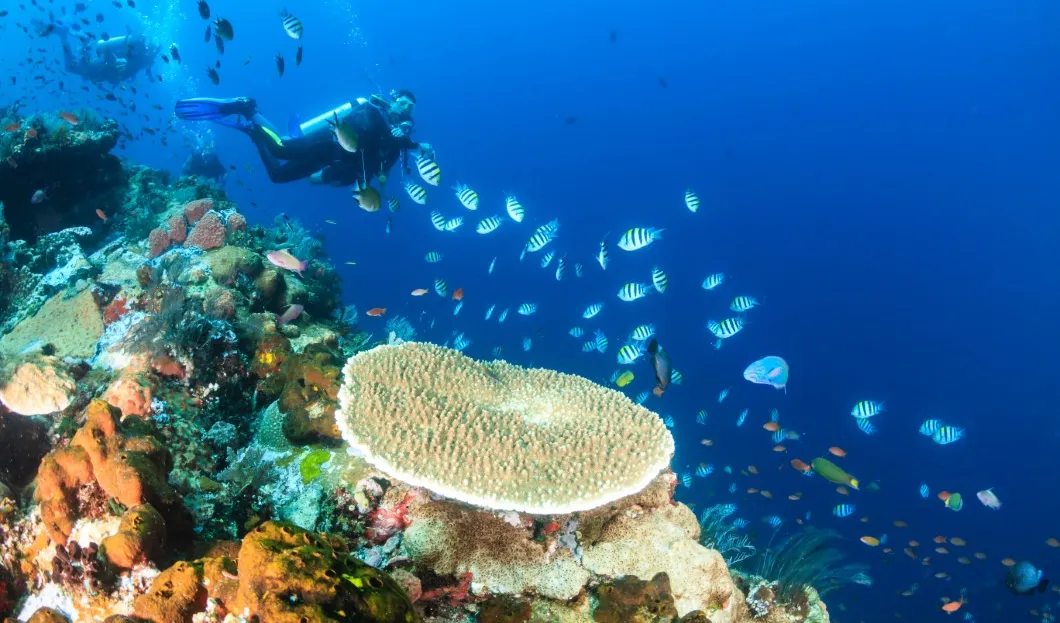
In the Hurghada resort, Egypt, coral reefs are disappearing as tourism bounces back.
The crystal-clear turquoise waters are the home of small pink jellyfish, which surround amateur scuba divers from all over the world. They visit the place to admire the depths of the Red Sea, whose mesmerizing corals are currently threatened by Egypt’s growing tourism sector.
On the touristy coast of Hurghada, in the east, clownfish, porkfish, and butterflyfish swim among the violet and green coral reefs, ten meters below sea level.
With fins, oxygen masks and a professional guide, a group of tourists, many of them Europeans, admire this peaceful show, in stark contrast with the bustling dry land life.
Hurghada has countless bazaars and hotel complexes with affordable prices to attract as many customers as possible.
“It's much cheaper than the Caribbean,” Daniel, a 29-year old German, confesses, as he enjoys the sun on a private beach. Like him, many other tourists are coming back to Hurghada. However, increased tourism threatens coral reefs.
The Egyptian tourism sector experienced an abrupt downfall after the revolution that deposed President Hosni Mubarak in 2011. The number of visitors dropped from 14.7 million in 2010 to 5.3 million in 2016, a year after the attack against a Russian airplane, killing 224 people in Sharm el-Sheikh, another tourist city on the coast of the Red Sea.
The situation has been improving since 2017. In 2018, tourism contribution to the country’s gross domestic product increased by 16.5%, reaching its highest peak since 2010, according to the World Travel and Tourism Council (WTTC). Egypt did not report last year’s visitor figures.
“The spike in Egyptian tourism is positive, but the pressure (on the reefs) has increased,” Heba Shawky, the director general of the NGO Hurghada Environmental Protection and Conservation Association (Hepca), reveals. The association was founded in 1992 by diving professionals concerned about the impact of tourism on the aquatic environment.

A scuba diver who guides tourists says that “there is tourist activity” in Hurghada and “places where (corals) have disappeared”. But “their preservation is much better than what we can see in Sharm el-Sheik and Marsa Alam,” other touristy areas, he adds.
According to the United Nations Environment Program (UNEP), at least 20 percent of the world’s “most beautiful, most sensitive and more diverse ecosystems” have been destroyed and 60 percent are threatened by climate change, tourism or predatory fishing.
Scientists consider that Red Sea corals are the most resistant to climate change and can become a global “refuge” for marine biodiversity, but they need protection from other hazards.
About 1.700 tour boats navigate these waters, as well as trading ships that cross the Suez Canal. The NGO Hepca implemented at least 1.200 markers in different diving areas to avoid the use of coral-destroying anchors, Shawky says. He adds that there is still plenty to do, such as reducing the size of dive boats, which reach 50 meters in length, while limiting their number as well.
“We don’t have pyramids nor temples, but we have living resources underwater and, by preserving the environment, we are supporting the tourism industry,” he says.
In his Hurghada office, the Red Sea governor, General Ahmed Abdallah, emphasizes the “efforts” of the authorities to preserve the sea environment and the coral reefs. “We ban the pollution that affects reefs,” he declares, adding that the local administration recently decided to ban disposable plastics as of June 1. According to UNEP, up to 12 million tons of plastic end up in the oceans each year.
Mahmoud Hanafy, a professor of marine biology at the Suez Canal University, believes that the authorities must establish protected places to avoid the “overexploitation” of “limited” resources. There is also another solution: “To create artificial reefs in order to reduce the pressure on the natural ones”.
Other countries with great subaquatic biodiversity, such as Australia and the Maldives, have developed new habitats, depositing 3D ceramic-printed reefs in the sea.









